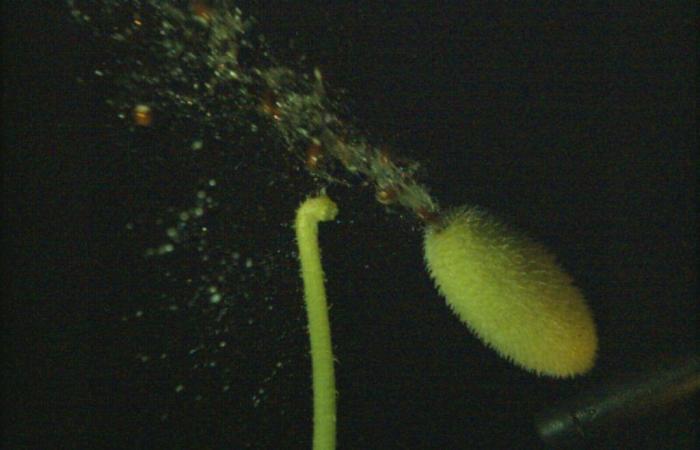The invention of seed plants has completely transformed life on Earth, well beyond the plant world. Although its origin remains unknown and probably dates back 400 million years, the seed is an incredibly ingenious device allowing a plant to remain dormant while waiting for better conditions to hatch. It also allows it to colonize new environments through very varied modes of dispersal. Carried by the elements, water, wind, spit out or defecated by their animal or human consumers, seeds have allowed plants to occupy almost all ecosystems.
Among the most astonishing dispersal mechanisms is that ofEcballium elaterium. Its secrets have just been brought to light by a British team from the University of Oxford in the journal Pnas. Flowering plant of the Cucurbitaceae family, Ecballium elaterium is found all around the Mediterranean. Its fruits are toxic, but that’s not what gives it the nickname devil’s cucumber. Also nicknamed jumping gherkin or explosive cucumber, the fruit of this plant has the rather unique characteristic of literally exploding when ripe, projecting its seeds over ten meters!
The explosion of the devil’s cucumber, the fastest movement in the plant world
This is the fastest kinetics ever recorded in a plant world where movements are usually rather slow. Including among plants practicing autochory, namely this mode of dissemination where organisms do not rely on the elements or animals to disperse their seeds but have developed mechanical means of expulsion.
Realize: it is estimated that at the maximum of its maturation, the pressure of the fruit of this cucurbit is six bars, or three times more than the tires of a car! Ejected, the seeds fly through the air at nearly 40 km/h. By combining practical experiments, high-speed video capture and mathematical modeling, Chris Thorogood, Finn Box and their colleagues analyzed the dynamics of the explosive cucumber for the first time.
Read alsoWhen the sea cucumber thinks it’s Spider-Man
The fruit reorients itself to be more effective
They were thus able to reveal, in the journal Pnasa process that they consider unique in the plant world. Thus, several days before the ejection of its seeds, the fruit slowly and gradually modifies its position thanks to a redistribution of its internal fluids. Almost vertical, it adopts a launching angle of 45°, optimal for propelling its seeds as far as possible when the fragile peduncle of the cucurbit plant detaches.
Read alsoThe fossil of an ancestor of sea cucumbers has been named Cthulhu
This reorientation allows the plant to disperse them at a distance nearly 2000 times greater than their length. In addition, during the ejection of the seeds, the ultra-rapid shots were able to measure a progressive decrease in the ejection speed associated with a rotation of the fruit as it fell, thus ensuring the seeds had the widest possible possible dispersion over an area ranging from 4 to 12 meters. Unrivaled ballistic efficiency that could be envied by the most advanced human catapults…






